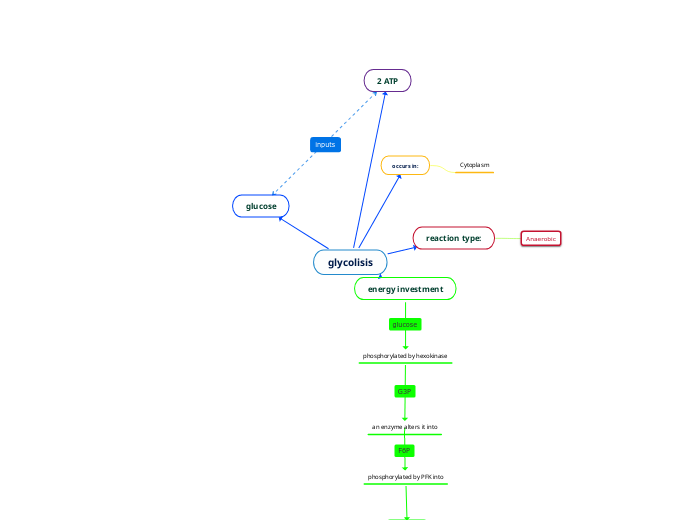glycolisis
2 ATP
occurs in:
Cytoplasm
reaction type:
Anaerobic
energy investment
phosphorylated by hexokinase
an enzyme alters it into
phosphorylated by PFK into
F16BP
DHAP
G3P
G3P
BPG
3PG
2PG
PEP
Pyruvate
End products:
4 ATP
ONLY 2 NET ATP
Pyruvate oxidation
aerobic
Pyruvate enters mitochondria via transport protien
NAD+ is reduced to NADH
Pyruvate is decarboxylated and CO2 is released. It now has 2 carbons
Coenzyme A is attached to make acetyl CoA
Krebs Cycle
Aerobic
matrix of the mitochondria
per glucose
Oxaloacetate
Cirate
Co2 and H2O
Isocitrate
a- ketoglutarate
Co2
NAD+ into NADH
Succinyl- CoA
Co2
NAD+ to NADH
Succinate
ATP
CoA
Fumarate
FAD into FADH2
Malate
H2O
Coenzyme A is added
NAD= into NADH
Oxidative phosphorylation
2 steps
Electron Transport Chain
Aerobic
Inner mitochondrial membrane
Electrons are delivered by NADH and FADH2
NAD+ and FAD
proton pumping
electrochemical gradient
Splitting of oxygen to form H2O
movement of electrons
Complex I
Complex II
Coenzyme Q
Complex III
Cytochrome C
Complex IV
Oxygen( HEATHER)
Oxygen is the most electronegative, it drives ETC as well as removes electrons from complex IV and 2 protons from the matrix ( this makes H2O
Intermembrane space
NADH
goes through complexes 1, 3, 4
10 protons
2,5 ATP
FADH2
goes through complexes 2,3,4
6 protons
1.5 ATP
Chemiosmosis
Final step of Cellular respiration
Aerobic
Inner mitochondrial membrane
Pumps protons from inner membrane back down the H+ gradient which results in the making of ATP through ATP synthase
ATP Synthase
As protons move down the gradient ADP is turned into ATP
Production of ATP is called oxidative phosphorylation
transport protien
Acetyl CoA
